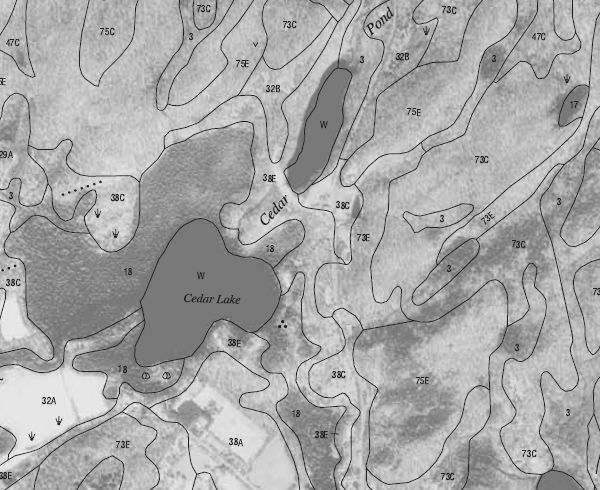
Soil Survey maps are part of the Soil Survey of the State of Connecticut. Each Soil Survey map delineates and labels soil map units with 1990-1992 aerial photography in the background for reference. There are four Soil Survey maps per 7.5 minute USGS topographic quadrangle (map) area – one for the northwest, northeast, southwest and southeast quarter quad. The Soil Survey maps are intended to be used at 1:12,000 scale (1 inch = 1,000 ft). Refer to the Soil Survey of the State of Connecticut for a complete description of each soil map unit.
All soil information included in the CT ECO maps and map viewers is from the Natural Resources Conservation Service (NRCS) Web Soil Survey (WSS), which is based on information originally published on these Soil Survey quarter quadrangle maps that cover Connecticut.
The Soil Survey of the State of Connecticut was made to provide information about the soils and miscellaneous areas in the survey area. The information includes a description of the soils and miscellaneous areas and their location and a discussion of their suitability, limitations, and management for specified uses. Interpretations are dynamic and periodically revised to reflect improved soils data, new technology and the needs of the soil survey users. In Connecticut, there are approximately 70 soil properties and 90 interpretations that are contained within the soils database.
Below is an example of the Soil Survey map with labeled soil map units such as 32A and 75C that can be looked up in the Soil Survey of the State of Connecticut for the name, type and description of the soil.

Earler soil surveys of the eight Connecticut counties (Fairfield, Hartford, Litchfield, Middlesex, New Haven, New London, Tolland and Windham) were published by the United States Department of Agriculture Soil Conservation Service between 1958 and 1983. This survey supercedes the earlier ones and provides additional informaiton and maps that show the soil in greater detail. Major field work for this soil survey was completed in 2002. Soil names and descriptions were approved in 2003. Unless otherwise indicated, statiments in this publication refer to conditions in the survey area in 2003.
This data set is not designed for use as a primary regulatory tool in permitting or siting decisions, but may be used as a reference source. This is public information and may be interpreted by organizations, agencies, units of government, or others based on needs; however, they are responsible for the appropriate application. Federal, State, or local regulatory bodies are not to reassign to the Natural Resources Conservation Service any authority for the decisions that they make. The Natural Resources Conservation Service will not perform any evaluations of these maps for purposes related solely to State or local regulatory programs.
This soil survey is a publiciation of the National Cooperative Soil Survey, a joint effort of the United States Department of Agriculture and other Federal agencies, State agencies including the Agricultural Experiment Stations, and local agencies. The Natural Resources Conservation Service has leadership for the Federal part of the National Cooperative Soil Survey. In Connecticut, the cooperating agencies include the Connecticut Agricultural Experimental Station, The Storrs Agricultural Experiment Station, and the Connecticut Department of Environmental Protection. Partial funding for this survey was provide by the United States Environmental Protection Agency and the Connecticut Department of Transportation.